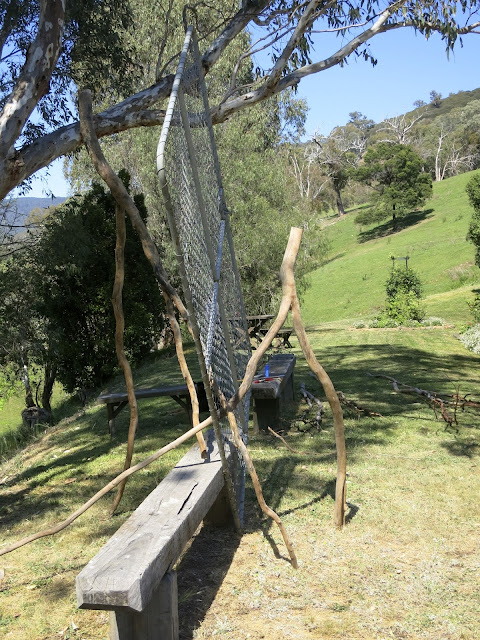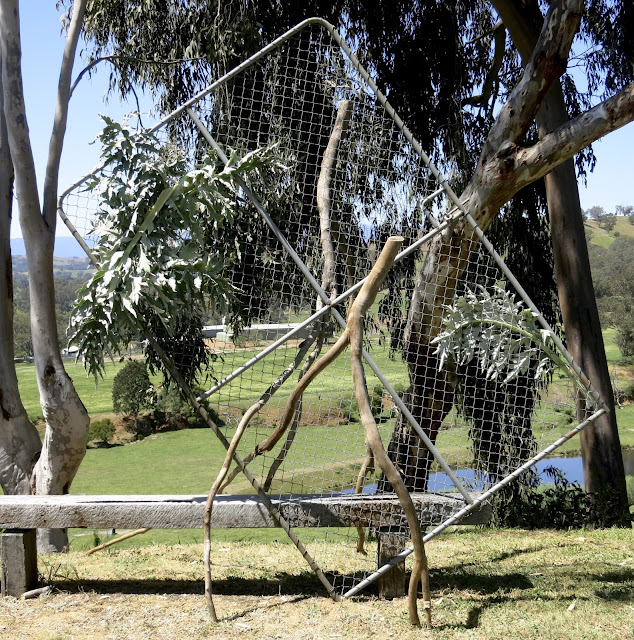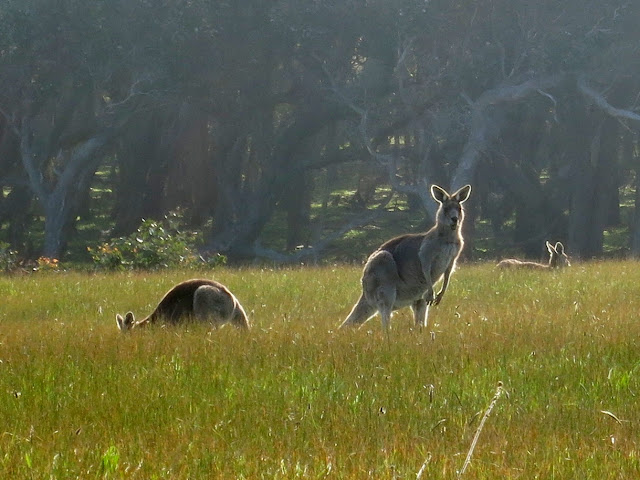A couple of weeks ago Laurie and I took our Canadian visitors to the 'Australian Garden' at the Royal Botanic Garden in Cranbourne. It was a great opportunity to see some of the huge variety of Australia's unique flora.
Eleanore and Laurie checking-out a Queensland Bottle Tree, Brachychiton Rupestris * .
The same flowering spikes from below.
This species above, grows in the clifftop-heath west of Torquay.
A close-up of the flowers.
* * *
Earlier in October the theme in Elizabeth's class was a Sogetsu, Book Four, curriculum exercise: 'Paying attention to the container and the place where it will be put'. Ikebanists are instructed to allow the work to 'stretch freely' so that the space becomes part of the work. We chose the locations for our work in advance and then brought along materials that we felt would work there.
Emily chose an elevated shelf and used this beautiful clematis from her garden, in a hanging arrangement 'to be viewed from below'.
Elizabeth created this dramatic arrangement on two shelves connected by strong angular lines of reed. It looked excellent and I'm afraid the photo does not do the work justice.
I liked the large surfaces of the fireplace chimney and thought it would be interesting to create an ikebana that would stretch across and around these surfaces. The day before the class, Laurie and I took our visitors to a cafe by the Yarra River and on the way back I picked some large dried stems of last summer's wild fennel. We must have made an odd sight, walking home in single file each with a bundle of fennel sticks.
I chose a large vase by Alistair Whyte * , that belongs to Laurie, and using fennel branches that still were green at their bases, arranged them at the corner of the fireplace. Some of the branchlets have been brought across the side surface of the chimney as this work could be seen through 270 degrees.
I used lighter branches, inverted, to make a strong line across the surface above the fireplace and added some pale yellow dried agapanthus stems for a lighter contrast.
Greetings from Christopher
30th October 2015
* click on the blue text for further information.









































